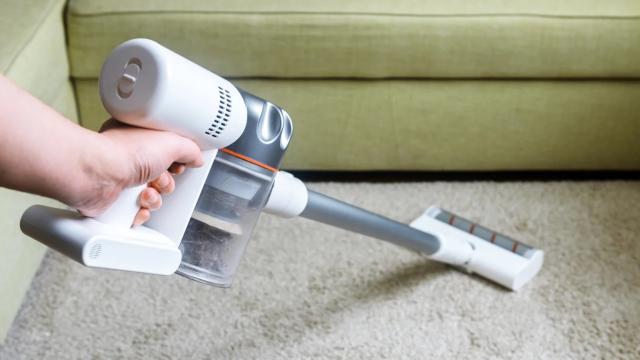It can be easy to forget that labor-saving devices used for cleaning—like dishwashers, washers, dryers, and vacuums—need to be cleaned and maintained themselves. Vacuum cleaners, for example, once were—and in some cases, continue to be—a major household investment. But, as materials and manufacturing have evolved over the decades, we’ve gotten to the point where repairing a vacuum (that’s not under warranty) or replacing a part often costs the same, if not more, than buying a new one.
Fortunately, there are steps you can take to shield your vacuum from an early demise. Whether you’ve invested in a high-end model, or are trying to put off replacing the one you’ve had for years, here are a few ways you can extend the life of your vacuum.
How to extend the life of your vacuum
According to a Consumer Reports reliability survey, vacuums last a median of eight years—though that can vary widely depending on brand, how often it’s used, and how (or if) it is maintained. This is something I can confirm from personal experience.
Growing up (in 1980s and 1990s), our household vacuum cleaner was a 1937 Kirby upright (similar to this one). Though it was rehomed to the basement when my parents eventually switched to something lighter and easier to maneuver, the Kirby still works. While the “they don’t make ’em like they used to” argument probably does apply here, it’s hard to say whether it would still be up and running today if it weren’t for decades of maintenance and proper use.
Based on my experience with modern canister vacuums, as well as the trusty ol’ Kirby, here are some strategies to help keep your vacuum in working order as long as possible:
Don’t treat it like a shop vac
Unless your household vacuum is, in fact, a shop vac, you shouldn’t be using it like one. In other words, pay attention to what you’re sucking up. Never use it to clean up fireplace ashes, sawdust, drywall dust, or any messes that are wet or soggy. And don’t run over coins or other larger objects, hoping for the best. Clear the area of those messes first, then vacuum.
Don’t put off emptying the canister or changing the bag
Removing a canister or bag from a vacuum when it’s full to the brim is likely to make a bigger mess for you to clean up. You can avoid this scenario by emptying the canister on a regular basis, and changing the bag as soon as you notice that it’s filling up, instead of holding off until it creates a problem.
Do your hair in the bathroom
Naturally shedding some hair throughout the day is one thing, but actively brushing, combing, or blow drying your hair is another. Try to confine those activities—and any others that tend to result in shedding—to the bathroom or another (ideally) non-carpeted room of your choice, and sweep it up with a broom or cloth instead of the vacuum. This will dramatically reduce the amount of hair that ends up getting caught in your vacuum’s roller brush.
Clean the roller brush regularly
Speaking of which, don’t wait until your roller brush stops spinning to clean it. Instead, get in the habit of removing any hair, floss, or string from the brush each time you empty your vacuum’s canister or bag.
Clear the filters
My current vacuum has two filters—one that’s built in, and another that’s removable—and I check them both each time I empty the canister. The built-in filter is usually clear enough, but if it’s not, I wipe it with a microfiber cloth or use an old toothbrush to remove any stuck-on debris. The removable filter, on the other hand, gets filled with dust pretty quickly, so I tap it on the side of the garbage can a few times, use the toothbrush if necessary, and regularly wash it with soap and water.
Finally, consider deep-cleaning your vacuum once or twice a year. Consult your vacuum’s owner’s manual to find out how to take it apart and clean it. Many modern canister vacuums have multiple parts that can—and should—be washed with soap and water, or at least wiped down. This Lifehacker article walks you through that process.

Leave a Reply
You must be logged in to post a comment.